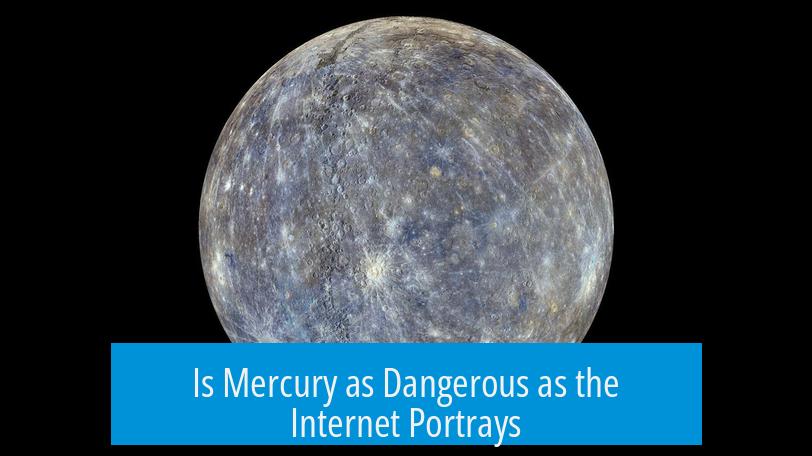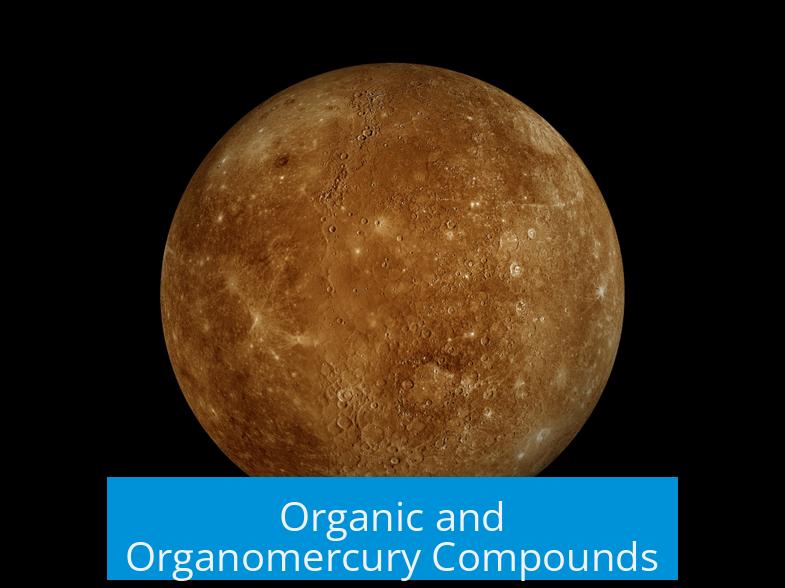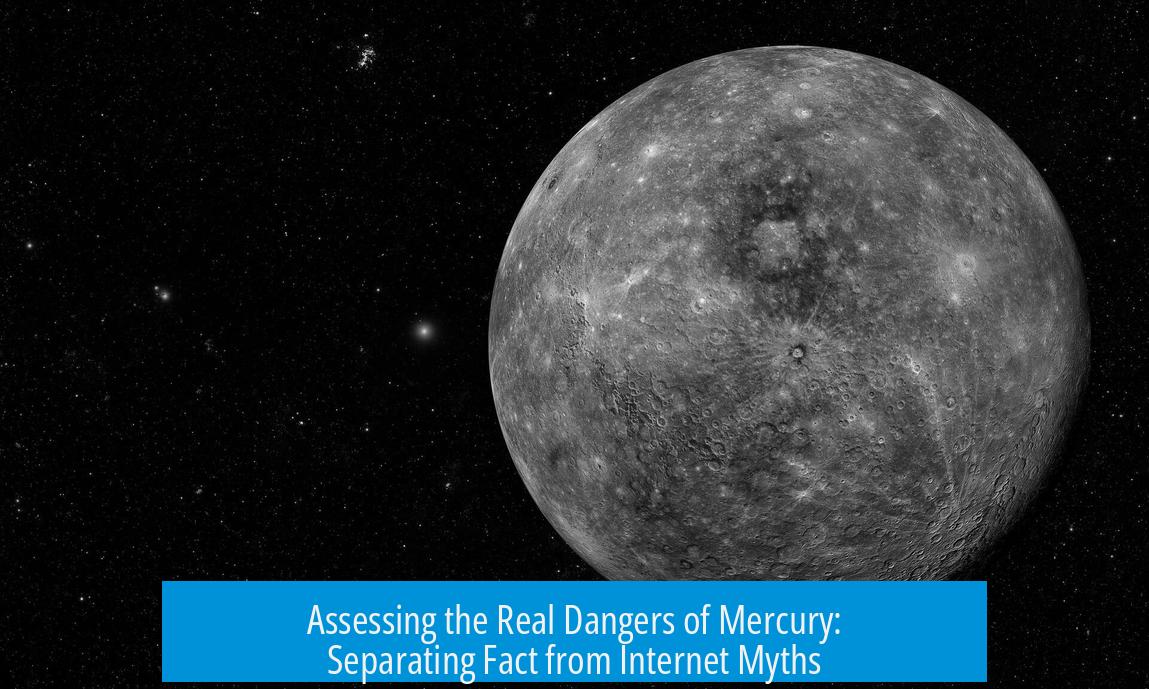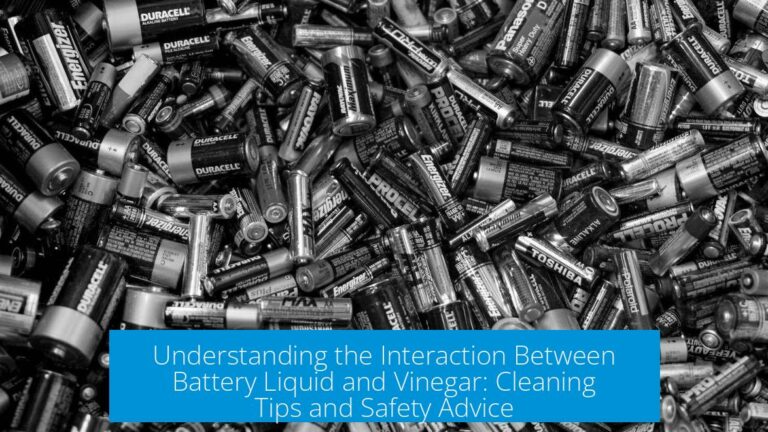Is Mercury as Dangerous as the Internet Portrays?

Mercury’s danger varies greatly by form and exposure route. Elemental mercury is relatively harmless unless its vapor is inhaled extensively or organic mercury compounds enter the body. Most internet fears mix all forms indiscriminately, but the real risk arises from mercury vapors and organomercury compounds like methylmercury. Proper handling and cleanup reduce health risks significantly.
Understanding Mercury Forms and Their Toxicity
Elemental (Metallic) Mercury
Elemental mercury is the liquid metal found in thermometers and some light bulbs. It has low skin absorption and does not cause harm if swallowed in small amounts. For example, small accidental ingestion rarely causes poisoning because it passes through the digestive system largely unchanged.
Despite its density and unusual physical properties, elemental mercury is mainly a concern when it vaporizes. Its vapors are easily inhaled and pose a health risk, especially in poorly ventilated spaces. The internet often exaggerates the danger from touching liquid mercury, but intact skin generally blocks absorption.
Mercury Vapor
Mercury vapor is the most hazardous form of elemental mercury. It has a high vapor pressure, making it easy to inhale. Inhaled vapor quickly enters the bloodstream via the lungs, reaching vital organs and causing neurological and kidney damage over chronic exposure.
- Fetuses and young children are especially vulnerable to mercury vapor.
- Proper ventilation dramatically reduces vapor concentration and associated risks.
- Small spills in homes or laboratories should be cleaned promptly to avoid vapor build-up.
Organic and Organomercury Compounds

Organic mercury compounds, such as methylmercury and dimethylmercury, are far more toxic than elemental mercury. These compounds readily absorb through the skin, digestive tract, and lungs. They accumulate in the body, particularly affecting the brain and nervous system.
Methylmercury bioaccumulates in fish and seafood, presenting the most common human exposure pathway. Dimethylmercury is highly toxic and can cause fatal poisoning after only minor skin contact. These forms of mercury interfere with protein function and increase oxidative stress in central nervous tissues.
Routes of Mercury Exposure Explained
Skin Contact
Elemental mercury barely absorbs through unbroken skin, minimizing risk during casual contact. However, some organic mercury compounds can penetrate the skin and cause toxicity. Cuts or abrasions increase absorption risk and require caution.
Dimethylmercury can even penetrate certain protective gloves, making exposure especially dangerous for people handling it without adequate safety measures.
Inhalation
Mercury vapors pose a significant threat via inhalation. High vapor pressure of elemental mercury leads to easy aerosol formation. Prolonged or high concentration exposure causes neurological symptoms and organ damage.
Indoor spills generating mercury vapor require immediate ventilation and proper cleanup to prevent inhalation risk.
Ingestion

Swallowing elemental mercury is generally harmless, but ingestion of organic mercury compounds is dangerous. Methylmercury poisoning from contaminated fish caused severe neurological disorders in human populations. Therefore, controlling mercury contamination in seafood is critical.
Other Exposure Routes
- Dental amalgams contain roughly 50% mercury but generally do not release harmful amounts.
- Certain skin-bleaching creams illegally containing mercury compounds risk systemic absorption.
- Mercury contamination in water and foods is a public health concern where environmental pollution is unchecked.
Health Risks and Symptoms Linked to Mercury
Mercury in the bloodstream can damage the central nervous system, kidneys, and liver. Signs of poisoning vary but often include tremors, memory problems, headaches, and sensory impairment.
Cases of dimethylmercury poisoning are notably severe and often fatal. Chronic low-level exposure to methylmercury causes cognitive deficits and developmental delays, particularly in children and fetuses.
While some anecdotes describe people handling mercury with minimal ill effect, these do not imply safety, especially without proper controls.
Best Practices for Mercury Safety
- Wear gloves and eye protection when handling mercury or mercury-containing devices.
- Ventilate spaces after spills promptly and do not use vacuum cleaners on mercury.
- Use sticky tape or specialized mercury sponges to collect droplets.
- Seal contaminated surfaces with floor wax if complete removal is impractical.
- Dispose of mercury waste at designated hazardous waste facilities.
- Avoid organic mercury compounds entirely and reduce mercury emissions in industries.
Regulatory agencies set exposure limits and recommend cleanup standards to manage mercury hazards effectively. Public awareness and careful handling prevent most risks.
Mercury in Ecosystems and the Food Chain

Inorganic mercury released into the environment transforms into methylmercury via microbial processes in aquatic systems. This highly toxic form bioaccumulates in fish and magnifies along the food chain.
Humans consuming large predatory fish ingest measurable methylmercury, representing the main exposure risk. Consequently, regulatory guidelines advise dietary limits on fish consumption, especially for vulnerable populations like pregnant women.
Reducing mercury emissions from coal burning and industrial processes remains critical to curbing environmental mercury contamination.
Historical and Cultural Context of Mercury Use
Mercury’s unique properties fascinated explorers and chemists historically. Past medicinal uses involving mercury often caused poisonings due to insufficient understanding of toxicity.
Chemistry classrooms sometimes exposed students to small amounts of elemental mercury without reported harm, but safety standards have improved significantly.
Internet horror stories usually conflate the properties of different mercury forms, generating disproportionate fear about relatively low-risk exposures like broken thermometers.
Key Takeaways on Mercury Danger
- Elemental mercury is low risk via skin contact or ingestion; vapor inhalation is the main elemental mercury threat.
- Organic mercury compounds (methylmercury, dimethylmercury) are highly toxic due to easy absorption and bioaccumulation.
- Most common exposure is through mercury-contaminated fish leading to methylmercury intake.
- Proper handling, cleanup, and environmental controls reduce health risks significantly.
- Internet fears often exaggerate elemental mercury dangers, overlooking critical differences among mercury forms.
- Regulation and public education remain essential for minimizing mercury’s impact on health and environment.
Is Mercury as Dangerous as the Internet Has Me Believe?
Let’s cut to the chase: Mercury’s danger depends heavily on its form and how you’re exposed to it. Elemental mercury—the shiny, silvery liquid you might’ve seen in old thermometers—isn’t nearly as terrifying as the internet paints it. But some forms of mercury? Now those require serious worry.
Mercury’s story is full of twists. It’s a dense, heavy metal with almost magical properties, yet its vapors and organic compounds lurk as silent threats. So, is mercury really as scary as all those viral posts suggest? Spoiler: Not quite—nor should we dismiss it outright.
Why Elemental Mercury Isn’t Usually the Villain

Elemental mercury, often called metallic mercury, is surprisingly inert when it comes to skin contact or even swallowing. You heard that right! Folks have reportedly swallowed small amounts—like a thimble’s worth—without any ill effects. That might sound like a dare at a party (please don’t try), but it highlights how poorly elemental mercury absorbs into the body through the gut.
On the skin, elemental mercury also fails to sneak in easily. Unless you have an open wound or a nasty cut, it won’t infiltrate your bloodstream. That’s why, despite its reputation, grabbing a tiny ball of the stuff with bare hands might not land you in the ER—though it’s definitely not recommended practice.
Still, don’t get too cozy with it. Elemental mercury can turn very dangerous when it vaporizes.
The Real Mercury Menace: Vapor and Organic Compounds
This is where the internet’s panic isn’t entirely misplaced.
Mercury vapor easily sneaks into your lungs. Once inside, it can wreak havoc, especially over long exposure. What’s scary is that the vapor has high pressure, so it doesn’t take long to fill a poorly ventilated room with invisible poison. Pregnant women are especially vulnerable because the vapors can harm unborn babies. So, the old anecdote of cracking a thermometer and leaving mercury beads lying around? Not exactly harmless if you’ve got poor ventilation.
Then, there’s the infamous organic mercury family. Methylmercury, and its cousin dimethylmercury, are the stuff of nightmares. These compounds easily penetrate skin and cross into your bloodstream. Dimethylmercury, notably, is *extremely* toxic—it has caused fatal poisonings even from small skin exposures. Organic mercury acts like a stealth neurotoxin, damaging the central nervous system and inducing oxidative stress.
Here’s a vivid historical note: Researchers handling dimethylmercury have died months after exposure. That chilling fact highlights just how dangerous these forms are—and how foolish it is to underestimate them.
So, How Do People Usually Get Exposed to Mercury?
- Skin contact: Elemental mercury struggles to pass through, but organic compounds zip right in. If your hands touch dimethylmercury, that’s bad news.
- Inhalation: The sneaky vapor is the primary threat, especially in confined, poorly ventilated spaces.
- Ingestion: Swallowing elemental mercury is surprisingly safe; swallowing methylmercury (usually through contaminated fish) is dangerous.
- Other ways: Mercury in dental fillings or lotions used in some countries can absorb and cause health effects.
Most mercury poisoning cases trace back to organic forms—either from seafood contaminated with methylmercury or industrial exposure to specialized mercury compounds.
Mercury in the Environment: The Fishy Connection
You’ve probably heard warnings about eating fish due to mercury. These warnings aren’t just paranoia—they’re rooted in how mercury bioaccumulates. Elemental mercury and inorganic forms released into water slowly convert, by microbes, into methylmercury.
This methylmercury piles up in fish tissue, especially large predators like tuna or swordfish. When we consume these fish, the toxic mercury enters our bodies. This bioaccumulation played a role in the infamous Minamata disease in Japan, where mercury poisoning caused severe neurological damage in communities relying on contaminated seafood.
So, while most people’s fish intake likely won’t spark mercury poisoning, it’s wise to monitor consumption of high-mercury species, especially for pregnant women.
Handling Mercury Like a Pro

Okay, mercury is scary but manageable. What’s the practical approach to keep safe without turning into a paranoid internet warrior?
- Wear gloves and safety glasses when working with mercury-containing items.
- If you break a thermometer or bulb, ventilate the area and pick up mercury beads carefully; avoid vacuuming to prevent vapor spreading.
- Use household dust or duct tape to collect mercury droplets, then dispose of them properly.
- If mercury spills into carpets, it can be tricky; sealing the spot with floor wax may help contain vapors.
- Regulations for cleanup exist where vapor levels reach hazardous concentrations—know your local rules.
- Avoid using and handling organic mercury compounds completely.
The industry knows mercury’s risks and strives aggressively to replace it wherever possible.
The Internet Hype: What’s Real, What’s Myth?
Browsing the web, you’ll find many scary mercury tales. Some exaggerate massively by blending elemental mercury facts with those of its deadly organic cousins. For example, tales of mercury poisoning from broken thermometers often blow the risk out of proportion.
Back in the day, kids in chemistry classes played with mercury happily. Despite the seeming recklessness, most didn’t suffer immediate harm—not because mercury’s safe, but mostly because their exposure wasn’t prolonged and vapors didn’t build up dangerously.
Many stories of mercury baths or old “home remedies” using quicksilver also remind us mercury is no joke, but context matters.
Final Word: Should You Fear Mercury?
Mercury is both less and more dangerous than the internet suggests.
Elemental mercury is relatively harmless if you don’t inhale fumes or eat it. But vapors can cause real damage when inhaled repeatedly in poorly ventilated spaces.
The truly terrifying mercury forms are organic compounds and vapor exposure—especially dimethylmercury and methylmercury. These can poison you silently and cause long-term neurological trauma. However, they’re not casually encountered in everyday life.
In other words, don’t freak out about a shattered old thermometer. But do respect mercury’s risks. Handle it with care, ventilate spaces, avoid ingestion and contact with skin if you suspect organic mercury, and always dispose of mercury-containing items properly.
Ultimately, like almost everything in life, it’s about dose and exposure. High amounts of mercury are dangerous. Slight traces handled wisely pose minimal risk. As one online chemist summarized: “You won’t stumble upon elemental mercury often, and if you do, careful handling makes danger unlikely.”
Have you ever encountered mercury? What amazed or scared you? Drop your story—no mercury beads involved!
1. Is elemental mercury on your skin really dangerous?
Elemental mercury doesn’t absorb well through unbroken skin. Unless you have cuts, brief skin contact is unlikely to harm you. The main risk is from breathing in mercury vapors, not touching it.
2. Are mercury vapors as harmful as the internet suggests?
Mercury vapor can be dangerous, especially in poorly ventilated spaces. Risks depend on concentration and exposure length. Pregnant women are more vulnerable to vapors.
3. Why is organic mercury more toxic than elemental mercury?
Organic mercury, like methylmercury, absorbs quickly into the bloodstream and builds up in tissues. It affects the nervous system and is much more harmful than elemental mercury.
4. Can swallowing elemental mercury cause poisoning?
Elemental mercury is mostly inert in the stomach and usually passes through without harm. However, ingesting organic mercury compounds is very toxic and dangerous.
5. How dangerous are mercury-containing items like thermometers or CFL bulbs?
Broken thermometers or bulbs can release mercury vapor. While individual bulbs pose low immediate risk, proper cleanup and ventilation are important to avoid vapor buildup.
6. Does eating fish expose you to dangerous mercury levels?
Fish can contain methylmercury due to environmental bioaccumulation. Most people’s fish consumption does not reach harmful mercury levels, but high consumption of certain fish can increase risk.





Leave a Comment